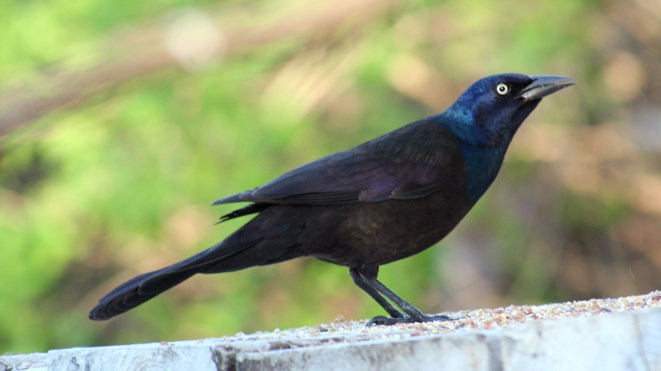Hot, hot, hot. A quiet walk in the woods in the current heat wave and you can literally hear the silence. Birders call this time of year the quiet time. For the most part, nesting has stopped.
The resident breeders are focused on building up fat reserves for themselves and the immature young of the year that they are rearing. There is an important need to get fat so that they can make the migration south in a healthy state.
You will not hear too many birds calling and staking out territory as they are now more on the move. Early morning and you may see flocks of red-winged blackbirds, common grackles and European starlings. They will use protected forest spaces for night roosts and as the sun rises they make their way to feeding areas throughout the region. These spaces can be found within city limits as well as outlying farm properties and forest tracts.
At some point, they will make their way to more southerly climes. Right now, the groups are small, but as the fall approaches flocks of several hundred will form. There is safety in numbers perhaps against some of the local predatory birds.
Did I say most birds are finished nesting? There is always an exception and in the Greater Sudbury area we have a species that many are familiar with. Here are your clues.
Bright “canary” yellow with black forehead, black wings with white wing bars and a black tail are good field marks for the male. Females have more subtle olive greens and yellows so that she can sit on her nest during incubation and blend in with the foliage of white birch or gray alder.
The late-nesting American goldfinch capitalizes on late flowering Canada thistle for their seeds to eat and the palps to entwine in their small nests. Nests blend in well in their surroundings and can be found in the canopy of the backyard trees.
They make their nest almost at eye level and sometimes higher in the canopy. The nest is about the size of a hardball. Material tends to be light gray to white in nature and is composed of plant mater. You may know they are nesting nearby because of the constant chatter of the males and later the constant activity to a certain tree or bush.
For the curious, the nest can be found in the fall or winter after all the leaves has fallen and the young are safely away. So that is where they were!
The brood size often reaches four in number. When young are ready to leave the nest more finch- like chatter can be heard again. American goldfinches moult their feathers and become more like the female plumage in winter. This often confuses the feeder watchers as they expect a bright yellow male rather than his winter plumage.
The fall migration has started. Keep your eyes open, look up once in a while and you will experience one of nature’s greatest phenomena. The possibility of unusual visitors is also one of the attractions of the fall migration. Some have already observed lesser yellowlegs and semi-palmated sandpipers visiting in small numbers to the area from their Arctic breeding. Perhaps you will see something unusual?
Chris Blomme is an executive member of the Sudbury Ornithological Society and works with animals at Laurentian University. Have a question for Chris? Send it to [email protected].
